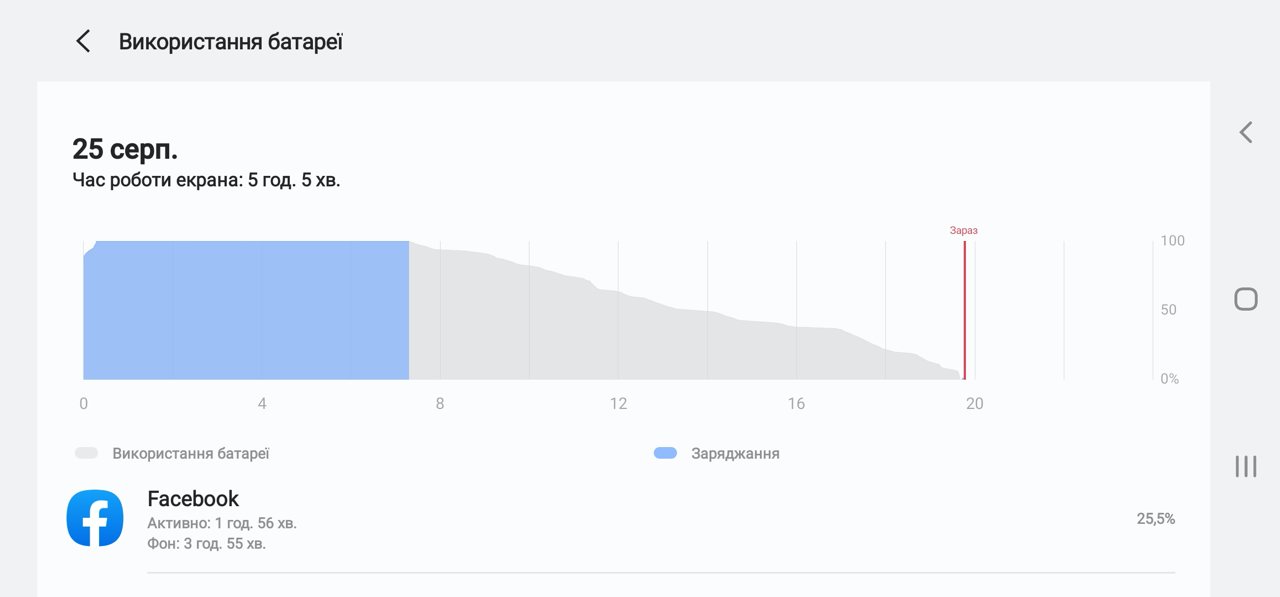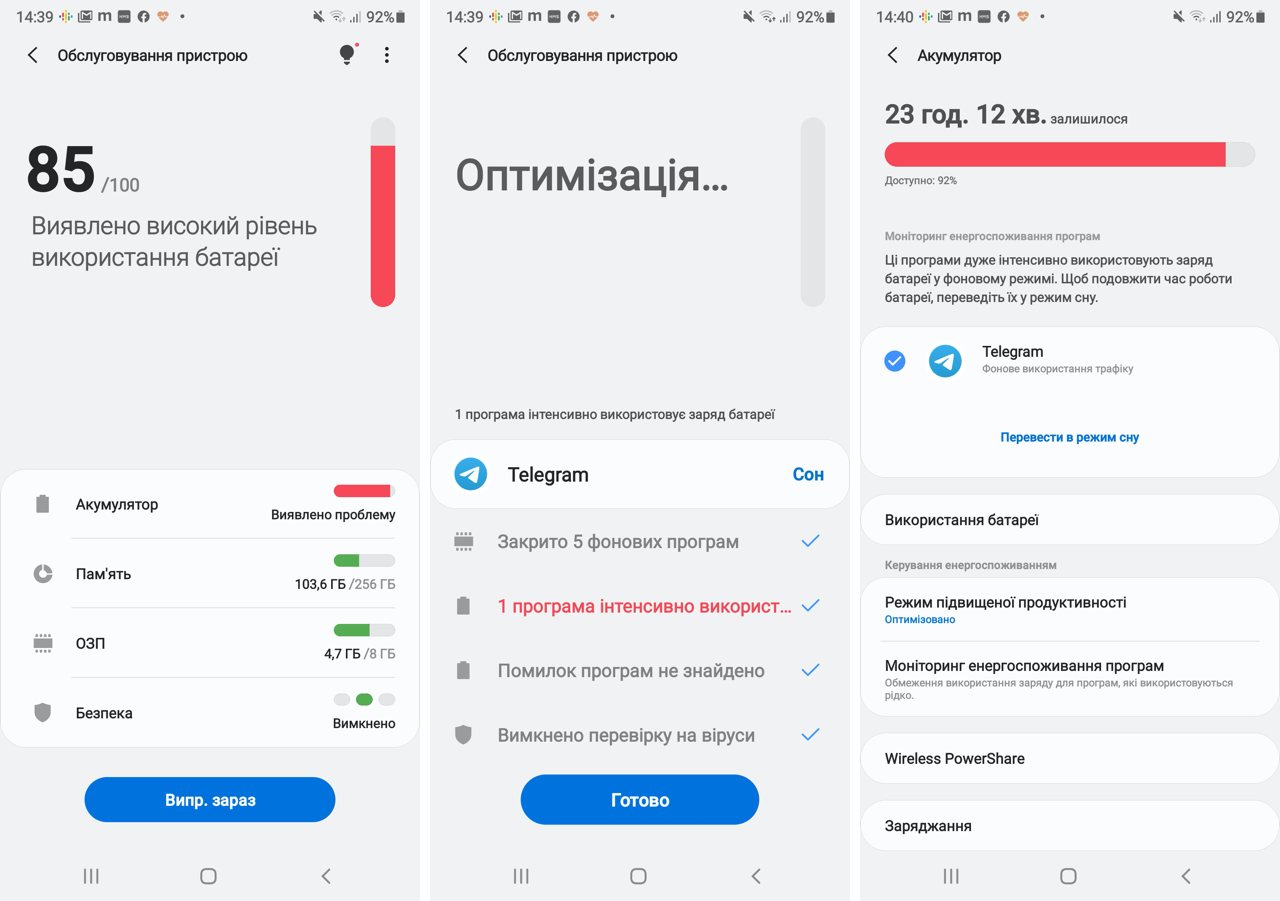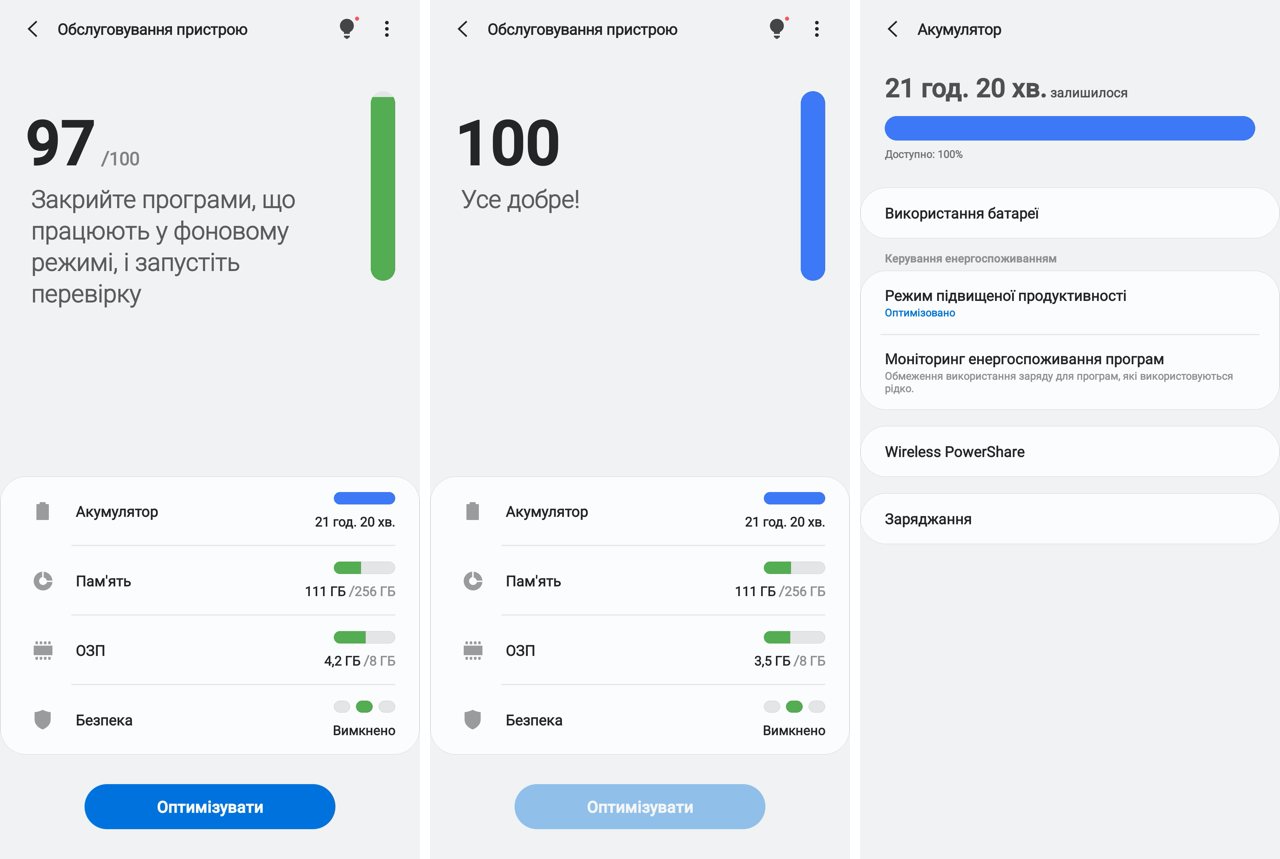
</ img>
There is one question in the world that always baffles me because there is no answer to it. At least
Usually when I start to explain why my experiencewill not say anything to the questioner about what results of autonomy will be in his case, and what affects this, a second, simpler (as it seems to the questioner) version of the same question arises: well, how many days / hours do you have on a smartphone? Anyone who understands the meaninglessness of this question and does not need an explanation of the elementary truths of using smartphones can go straight to the results and benchmark, for the rest there is a little theory from the Captain's Encyclopedia Obvious.
What determines the battery life of a smartphone?
Every smartphone today, like every computer,has its own unique set of user-installed applications that are needed (or not - everyone has installed applications that they do not use) for a specific person. Each application, in turn, exhibits energy-consuming activity, which is directly dependent on user actions in the application or service. Simply put, someone has 20 friends on Facebook, someone has 200, and someone has 2000. Someone is subscribed to 10 channels on Telegram, someone to 100, and someone to 1000. Alone people receive 2-3 messages in their messenger, while others have correspondence there like a machine gun and does not stop throughout the day. Let's add to all this that the main consumer of energy in modern smartphones are displays - they are now large and bright (and we all love that, of course). The situation is also influenced by the number of activated wireless connections - every smartphone today has several antennas installed: for GSM, for Wi-Fi, for Bluetooth, for NFC. GPS also makes its contribution to the situation. Now let's add into the equation what everyone usually starts with when looking at the technical characteristics of a smartphone: battery capacity. It would seem that the only thing that matters, and even containing measurable numbers in milliamp-hours (why, by the way, not switch to ampere-hours is absolutely not clear to me - it’s the same as measuring the distance traveled per day in millimeters, and not meters, but this is a topic for a separate conversation, and purely psychologically, the extra three zeros in the characteristics add importance, which no marketer can refuse).
As a result, we have an equation with a huge numberuncontrollable variables that (the icing on the cake!) even for one specific user will be different because no two days are the same. Today you rode the bus all day and plugged into your smartphone, and tomorrow you went fishing, leaving your smartphone all day in a tent (hotel room, travel bag, old jeans, lake bottom - underline as appropriate).
How to increase the battery life of your smartphone?
What should the user do in this situation?How to evaluate opportunities that are difficult to measure or even imagine? The correct answer to the question is nothing, because it is important to understand what affects the battery life of a smartphone and what can be done to increase it? At the same time, the battery capacity can be taken out of the equation altogether, because it is constantly growing, just as our consumption of smartphones is growing. If you have a question - why don’t smartphone manufacturers put larger batteries on their devices, then the answer is simple and complex (such is life) at the same time. The simple answer is that the price tag is prohibitively high, with tens of millions of units sold, and during production it is necessary to find a balance between the size of the smartphone and its technical capabilities. A difficult answer: all manufacturers are looking for a reasonable compromise between cost and technical characteristics of their smartphones. Everyone has their own strategy and their own understanding of how to solve this complex (here we go again, what is it) problem. This creates competition, leading the best to success, as in sports, for example. It’s very easy to say “if only they installed a bigger battery, we’d buy everything,” without understanding all the pitfalls. All smartphone development processes have their own limitations (in terms of the size and thickness of the case, the price of components and the final margin of the finished device. And this is hardly one tenth of the full list.
Smartphone manufacturers are trying to programmethods and tips for users to increase battery life. For example, disabling the activity of applications that have not been used for a long time. To one degree or another, the Android operating system itself does this. Architecturally, the process of smartphone autonomy is closely related to its performance, as we already discussed in the previous article. Some of the optimization processes occur automatically - for example, when the Galaxy Note 20 Ultra reaches 15% battery charge, it displays a message indicating that it is time to charge it. And when it reaches 5%, it forces it into power saving mode, leaving the display brightness at minimum and turning off most processes. Some processes can be controlled by the user, choosing between performance modes, which, as we already know, are directly related to autonomy. That is, it is important to know that the main consumers of energy in a smartphone are the screen, wireless connections and running applications (which constantly access the network for new data). Accordingly, if we want to extend the operating time of a smartphone, we turn off its unused wireless connections, reduce the screen brightness and close applications launched yesterday that are still hanging in the memory.
How I usually discharge my smartphone battery
My experience with battery lifeflagship smartphones have not changed for many years (yours can be arbitrarily different, which can be read about above), does not depend on the battery capacity at all (it, as already mentioned, grows in proportion to the performance of smartphones) and comes down mainly to three scenarios:
- If you leave your smartphone alone with you and do nottouch it, then it will go from fully charged to fully discharged in 2-3 days only due to applications running in the background and receiving notifications.
- On a normal work day when I work forcomputer, smartphone is used for rare calls. Calls from me are actually quite rare and don’t even happen every day, because in most cases I communicate in messengers - it’s more convenient also because you can answer a message at any convenient time, and calls usually arrive at the most inopportune moment . During breaks (I don’t have “smoke breaks”) I can play a simple game like Clash of Clans to distract myself and switch between tasks, read my feed on social networks, messages in instant messengers and use mobile applications that are more convenient than on a computer or in general do not have a desktop or web version. These, for example, include banking applications, store applications, gas stations or, for example, Nova Poshta. Even during the day, the smartphone is used as a means of payment - fortunately in Kyiv, this option is already available everywhere, cash is only needed for minibuses and farmers' markets (this, by the way, is a flaw of farmers who could earn more). In this mode, by the end of the day I have 20-40% battery charge left.
- Finally, the hardest use case ismy smartphone happens during travel - business trips and vacations. When the smartphone is in my hands all day and completely replaces the computer (mail, instant messengers), and I also take a lot of pictures on trips and publish photos and videos on Instagram, not sparing the mobile Internet even abroad (thanks to the roaming tariffs of recent years - even in the USA and South Korea they have become humane in the transfer of data). In this mode. In this scenario, any smartphone is discharged by 14 hours and needs to be recharged. Therefore, I use an external battery when traveling. In his car, of course, the smartphone is constantly being charged; such trips do not require any efforts for autonomy from him. Fortunately, there are only a few days when this happens.
Weekends, depending on the situation, I havepass somewhere between the first and the second or the second and the third scenario, that is, the smartphone's charge is still enough for the whole day. By the way, I rarely put my smartphone on charge at night, because there is always a charging cable next to the computer, there are also several of them in the car.
Now that we have consolidated the necessary theoretical knowledge, we turn to practice.
Battery life of Samsung Galaxy Note 20 Ultra
Here is an example of using a Samsung batteryGalaxy Note 20 Ultra during the day. It was on vacation, but that day my family and I spent the entire day at the hotel, so everything went according to the weekend scenario between options 2 and 3. As you can see, a fully charged smartphone started working at 7 am, and by 8 pm it was already completely discharged. At the same time, the operating time of the screen (the main consumer of energy in a smartphone, as we have already found out) was 5 and a bit hours.

</ img>
If you look at which applications are the mostcontributed to the smartphone's discharge, then this is Facebook (2 hours of activity and another 4 hours of work in the background), half an hour of playing Clash of Clans during the day, then instant messengers and Google maps (I was researching where to go in the coming days) and a camera with Instagram. Moreover, the camera was used for only 6 minutes; there was nothing special to shoot. Don't be fooled by the battery usage graph over the last 7 days, where the charge level is above 100%. This means that during the day the smartphone was charged (like, for example, on the 23rd, when we drove a lot, respectively, the smartphone was constantly connected to the charger in the car again and again).

</ img>
This is what a synthetic test looks likeautonomy of the Samsung Galaxy Note 20 Ultra in the PCMark Work 2.0 benchmark. As you can see, it shows 9 hours 20 minutes of work, and even claims that these are the results for one of the most powerful devices. It’s not very clear what exact hours of operation the creators of the benchmark have in mind, but in reality I got 13 hours of work, of which 5 hours the screen was on. With all wireless connections activated, I used both Wi-Fi and 4G throughout the day.

</ img>
What can be done to improve the autonomy of the Samsung Galaxy Note 20 Ultra
In addition to a balanced choice of modeProductivity Samsung Galaxy Note 20 Ultra offers the user, in order to increase the battery life of the smartphone, the Device Maintenance section in the settings menu, where you can see a system report on operating efficiency, expressed as a percentage, and by pressing the magic button “Make everything good” “Optimize” the situation can be corrected. That is, close unused applications hanging in memory. And draw the user’s attention to applications that show insatiable appetites in matters of energy consumption. This is a kind of advice from a nutritionist.

</ img>
If you regularly go to this settings section,then you can maintain the battery discharge state in good shape and extend the life of your smartphone in this simple way. Well, and don’t forget, if necessary, to switch to more gentle productivity modes, which are also located in this section of the menu.

</ img>
Five important things you need to know about the battery life of the Samsung Galaxy Note 20 Ultra
- The battery life of a smartphone directly depends on the selected screen brightness and the number of running applications
- You can increase the working time by choosing a less gentle productivity mode with lower energy consumption
- Regular closing of unused applications will benefit the working time (forget to close applications manually - press the button in the menu, the smartphone will do all the work itself, it is smart)
- Both in benchmarks and in real work, the Samsung Galaxy Note 20 Ultra demonstrates the highest battery life among smartphones
- When the battery level drops to 5%, the smartphone will automatically go into power saving mode, trying to keep the user connected for as long as possible
To be continued. If you have questions about the Samsung Galaxy Note 20 Ultra smartphone, leave them in the comments, I will try to answer.